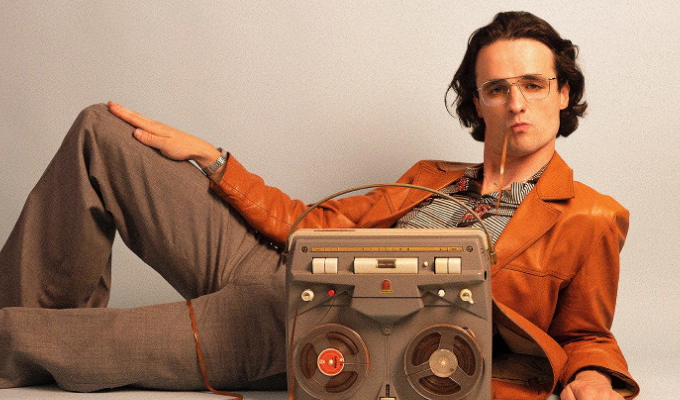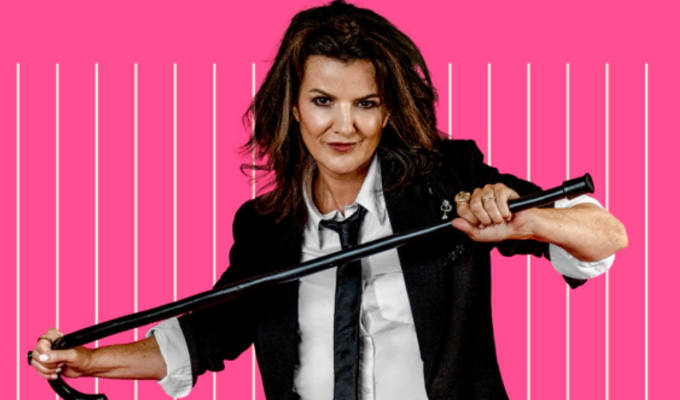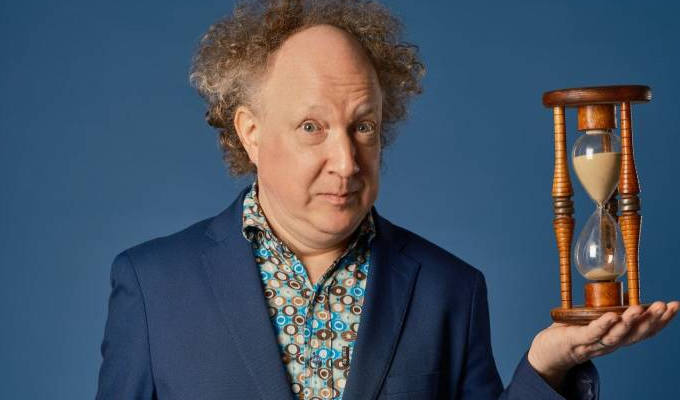The home of stand-up
Steve Bennett takes a trip to the Catskill mountains
“I always sit in the back of planes,” jokes the slick, suited comedian on stage. “D’ya ever hear a plane backing into a mountain?”It’s a gag as old as the hills around us. Then again, the audience don’t seem that much older and they’re loving this nostalgic shtick. From mother-in-law jokes to the mandatory rendition of My Way (sung, with no nod to the obvious irony, in the style of other people), the ‘comedy stylings’ of Jack Fontana are a sure hit.
We’re at Villa Roma, one of the few resorts that still thrives in the Catskill mountains of upstate New York. In its heyday of the Forties and Fifties, this area was America’s entertainment hub, a Las Vegas of the East coast and home to around 700 hotels, all buzzing with comics, musicians and holidaymakers.
Nowadays, the stars are gone, as are most the hotels. Most of those still standing are a sad shadow of their former glory, functional but unglamorous. But like a bad comic, the Catskills tourism industry won’t quit when it’s dying, and locals are now daring to be optimistic about the future.
You may have heard of this area by its other name, the Borscht Belt, making it possibly the only holiday destination named after a cold beetroot soup. Back in the day, Borscht Belt was a byword for a whole generation of wisecracking comedians, who, like their audience were mostly Jewish.
Everyone who would become anyone played here. Some of the most beloved names to elderly Americans may not mean that much on this side of the Atlantic, but they were the fathers of television entertainment – Milton Berle, Buddy Hackett, Henny Youngman, Shecky Green (pictured). Others are more familiar: Danny Kaye, Jerry Lewis, Jackie Mason, Joan Rivers, Mel Brookes and Woody Allen – they all played here, too.
Mostly they started as what’s known by the Yiddish term ‘tummeler’, a kind of kosher redcoat who would look after the guests and stage the entertainment.
It was a great job for a young man, paying as much for a summer season as their father would probably earn all year. And there were fringe benefits too. Many guests were the wives of wealthy New York businessmen, and after their husbands returned to their jobs in the city, the women were often left in need of special entertainment of their own.
“All these crazy people came to work here,” reminisces Marc Minoff, who works at one the few surviving resorts, Kutscher’s, “and they turned out to be the funniest people in the world,”
“All the great comics that worked here as lunatics, as tummlers, started early comedy in television. Buddy Hackett, for instance, gave out ski poles at the Concord hotel.”
The Catskills community emerged at the turn of the century, when Jewish immigrants started leaving their enclaves in New York City, seeking to make their living from the soil as they had in Europe. But the mountain land proved too barren for farming, so instead they began renting rooms to a very slow trickle of tourists. Gradually word grew, and families desperate to flee the searing New York heat would endure the day-long journey by train or along rudimentary cattle-track roads, for the cool, fresh air of the Catskill’s Sullivan County. And, unlike some destinations of that intolerant era, the towns actively welcomed Jews.
After the war, the area really thrived. Better roads made the 90-mile trip a lot less daunting, and resorts started offering some of the earliest package holidays – chalet accommodation, kosher food and entertainment all included in the price.
It was a winning formula for two decades, with the biggest hotels like the Concord, Grossinger’s and Kutscher’s expanding every year, adding tennis courts, golf courses and swimming pools. “Everywhere had an Olympic-sized swimming pool,” says local historian Bernard Cohen, “No matter what its actual size.” The Catskills came to have the greatest concentration of live entertainment venues America would even know, the classroom where a generation of comedians learned to ply their trade.
But the success couldn’t last. And in the Sixties trade started drying up. The reason? Air conditioning.
As units became more affordable and more portable, a New York summer was no longer intolerable. You no longer had to flee the apartment to cool down. “The Catskills was killed by the three As,” says Cohen. “Air conditioning, air travel and age.”
The jet age put far more glamorous destinations than the Catskills in reach of Manhattan, while ‘age’ factor affected resort owners as much as the customers. As the founders became too old to work, their offspring were unwilling to go into the gruelling family business.
Still, the ailing tourism industry rolled on, relying then, as it still does, on the nostalgia of older generations returning to the holiday destinations of their youth at an all-inclusive price.
Marc Minoff recalls one day at Grossinger’s in the Seventies: “I was there a night Billy Crystal was there – this was in 1979, right before he goes on the TV show Soap and becomes famous – but at that time he was working up here in the Catskills. He’s on stage, and is shocked and worried when half the people walked out.
“But they were older people, and since they weren’t paying for the show, they would leave to go to sleep at 10pm. If you asked those people if they liked Billy Crystal, or not, they would go ‘oh yes, he’s very good’ but they had to go to bed. We used to call that a Catskill standing ovation.”
The biggest blow to the region came with the closure of Grossinger’s in 1985, putting 800 people out of work. It was a day of mixed emotions for those who’d spent a tough lifetime playing there. As the buildings were pulled down, Lou ‘Simon Says’ Goldstein, a fixture on the bill for nearly 40 years, said: “It’s like watching my mother-in-law go over a cliff – in my Cadillac.”
Today, even the nostalgia market is drying up. Those who once lived in New York now live in Florida, and the comics went with them. The same people, being entertained by the same performers, but in a different climate.
Today, only a handful of resorts remain in the Catskills, and most of those have seen better days. At Kutsher’s, still owned by matriarch Helen Kutscher, Minoff proudly shows off the main auditorium, decorated with a bizarre sci-fi motif. “It was designed when Star Wars was out,” he says. It shows.
Yet even as the area’s reputation fades with the wallpaper, there is a new vigour among many here to turn the Castskills’ fortune around. The show may yet go on…
The saviour could well be gambling – though the same arguments about the wisdom of that idea rage in upstate New York as theu do in Britain.
Desperate for revenue, state authorities are keen to sanction the building of up to five Indian casinos in Sullivan County. The first is likely to be at the disused Monticello racetrack, which already made the first inroads with a casino hall boasting 1,700 slot machines.
When it’s finished, the half-billion-dollar resort will be the nearest Vegas-style casino to New Yorkers and could be the key to revitalising the area, especially if, as expected, more follow. Such speculation has already led to the building of the area’s first new hotel in years, an upmarket motel called The Lodge At Rock Hill.
Gambling wouldn’t be the area’s only attraction, though. In winter, there’s skiing, ice fishing and snowmobiling; and in summer, trips down the mighty Delaware, plus walking, hiking and horseback riding trails though the surrounding woodlands. The resorts offer plenty of golf, and the area is proud of its angling, especially for trout. The Catskills even boasts a fly-fishing museum that “displays angling equipment, art and artifacts in a way that explains the traditions and techniques of our sport”. Fascinating, I suppose.
The Catskills also boasts another claim to entertainment fame. For it was on an anonymous field near the town of Bethel that 400,000 people descended in 1969 for a free rock festival. Woodstock.
These days, it’s just another slice of quiet farmland, the silence occasionally punctured by a child of the flower power era driving their gas-guzzling people carrier to the hallowed spot, now marked by a couple of discreet sculptures, to relive a few hazy memories
But this, too, is likely to change. A $46million Performing Arts Centre is opening there in spring 2008. Some of the locals don’t like it, feeing it betrays the spirit of Woodstock, but their opposition is unlikely to stand in its way.
But with these monuments to music and fly-fishing, the one thing the Catskills lacks is any monument to the Borscht Belt.
This could change. Bernard Cohen is president of a campaign to create a Catskills Entertainment Hall Of Fame to pay tribute to the performers who “changed forever America’s popular culture”.
“There is an urgent need to preserve this part of our history before all memory and evidence of these phenomenal years fades away,” he said. “Physical proof of the entertainment revolution that began in the Catskills, buildings and people, are rapidly disappearing.”
His aim, if he can raise the money, is for a high-tech museum, combining tape-recorded memories, archive footage and original memorabilia. He won’t say much about his chances, but the are could do with the project.
Until the old jokes’ home is built, the gags will live on only in the routines of troopers like Jack Fontana. Unless Vegas comes to town, that is, and the inevitable invasion of entertainers that will entail; a new batch of comics all hoping to make their name, once more, as a Borscht Belt star.
Published: 3 Feb 2008






